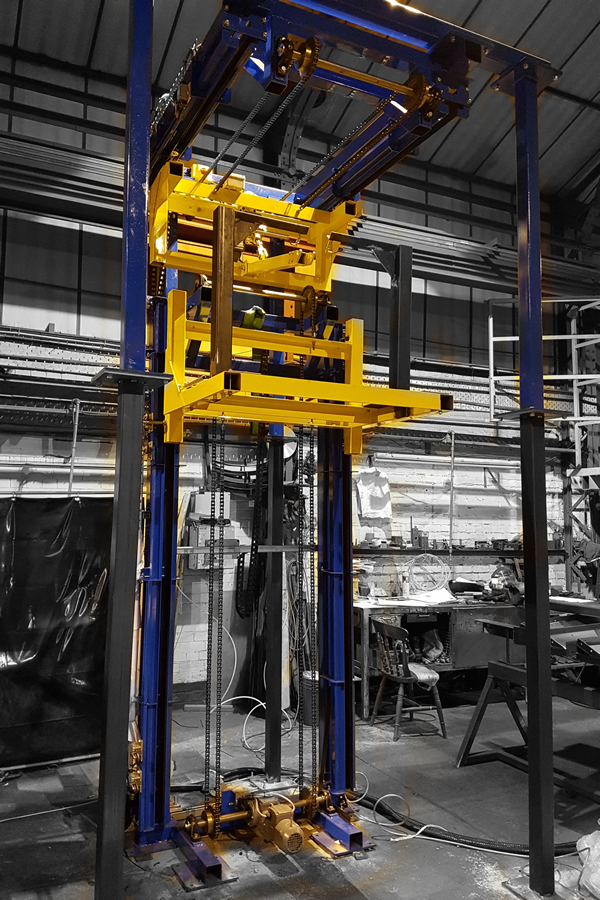Discover Trusted Lift Repair Near Me for Rapid and Affordable Solution
Discover Trusted Lift Repair Near Me for Rapid and Affordable Solution
Blog Article
Exploring the World of Lifts: Typical Concerns Dealt With by Various Lift Systems
As we browse with the upright transportation systems of modern-day buildings, elevators stand out as a vital element of our daily lives. From hydraulic lifts to grip systems and machine-room-less layouts, each lift kind comes with its collection of usual problems.
Hydraulic Lifts
Hydraulic lifts, typically liked for low-rise structures, use fluid stress to manage the activity of the lift cars and truck (lift repair companies). This system includes a hydraulic pump pushing oil into a cyndrical tube, triggering the lift to relocate in the preferred direction. While hydraulic lifts are recognized for their smooth and quiet procedure, they do include their own set of usual issues
One common trouble with hydraulic lifts is oil leakage. The seals in the hydraulic system can wear in time, leading to oil infiltration. If left unaddressed, this not just develops a mess however can also impact the elevator's efficiency. Additionally, issues with the control system, such as defective shutoffs or a malfunctioning pump, can create disruptions in the elevator's movement.
Normal maintenance and punctual repair work are necessary to make sure the smooth performance of hydraulic elevators. By addressing these usual issues proactively, building proprietors can minimize downtime and guarantee the security and effectiveness of their upright transportation system.
Traction Elevators
When considering upright transport systems in buildings, one more typical type other than hydraulic elevators is the traction lift. Grip elevators run using a system of ropes and weights that move the elevator auto by grasping onto the hoist ropes. This system enables smoother and quicker vertical transport contrasted to hydraulic systems.
One of the usual concerns dealt with by traction elevators is rope wear. The continuous activity of the ropes within the grip system can lead to tear and put on in time, potentially causing the lift to malfunction or end up being harmful for usage. Regular inspections and upkeep of the ropes are necessary to ensure the lift's correct functioning and safety and security.
An additional concern that traction elevators may come across is connected to the control system. Troubles with the control system can bring about issues such as erratic activity, delays in action times, or perhaps complete closures. Routine screening and upkeep of the control system are critical to stop such problems and make certain the lift's dependability.
Machine-Room-Less (MRL) Elevators

One of the vital elements of MRL elevators is the portable gearless traction maker that is set up within the hoistway. This equipment successfully drives the elevator auto without the demand for bulky devices discovered in standard traction elevators. Furthermore, MRL elevators generally make use of a weight system to balance the vehicle, additional enhancing we maintain lifts their energy efficiency.
Regardless of their benefits, MRL elevators may deal with challenges associated to repair and maintenance because of the confined area for equipment setup. Availability for servicing elements within the shaft can be restricted, calling for specialized training for specialists. Appropriate maintenance routines and routine assessments are critical to ensure the ongoing smooth procedure of MRL lifts.
Overloading and Weight Limit Issues
Overloading and weight restriction concerns are vital issues in lift operations. Elevator makers style raises with details weight abilities to guarantee passenger safety and equipment long life.
When elevators are overwhelmed, it puts too much strain on the motor, cables, and various other elements, potentially creating breakdowns or breakdowns. If they identify excess weight, safety systems such as sensing units and overload sensing units are in area to prevent elevators from moving. Furthermore, exceeding weight limitations can lead to raised energy consumption and damage on the lift system.
To mitigate straining problems, building managers should plainly display weight limits in lifts and enlighten occupants on the relevance of sticking to these constraints - lift repair companies. Regular upkeep checks by certified professionals can likewise help make certain that elevators are operating within risk-free weight specifications. By dealing with overloading and weight restriction issues proactively, building owners can enhance elevator safety and security and performance
Electrical System Failures
Surpassing weight restrictions in elevators can not only result in mechanical problems yet additionally possibly add to electrical system failures within the lift facilities. Electric system failures are a critical issue in elevator procedure, as they can trigger unforeseen closures, malfunctions, or even safety risks. One typical electrical problem is the overheating of components due to too much existing flow triggered by overwhelming the lift past its capacity. This can lead to damage to the electrical wiring, control, or electric motor systems, leading to expensive repair work and downtime.
Furthermore, power surges or variations in the electrical supply can likewise interrupt the elevator's procedure, influencing its efficiency and security. These electric disruptions can harm delicate elevator parts such as control board, motherboard, or sensing units, leading to system failings. Normal upkeep lift repair near me and inspections are critical to recognize and attend to possible electrical problems promptly, guaranteeing the risk-free and efficient operation of elevator systems. By sticking to weight limitations and conducting regular electrical system checks, structure owners can reduce the risk of electrical failures in elevators.
Conclusion

Hydraulic lifts, usually favored for low-rise buildings, utilize fluid stress to control the activity of the elevator car.When taking into consideration upright transportation systems in structures, an additional typical type apart from hydraulic elevators is the grip elevator. Traction elevators run using a system of ropes and weights that move the elevator cars and truck disabled platform lifts prices uk by grasping onto the hoist ropes. Unlike traditional lifts that require a separate equipment space to house the tools, MRL elevators incorporate most of the elements within the shaft, eliminating the need for a dedicated maker space.In conclusion, elevators encounter common problems such as hydraulic breakdowns, traction system failings, and electric system issues.
Report this page